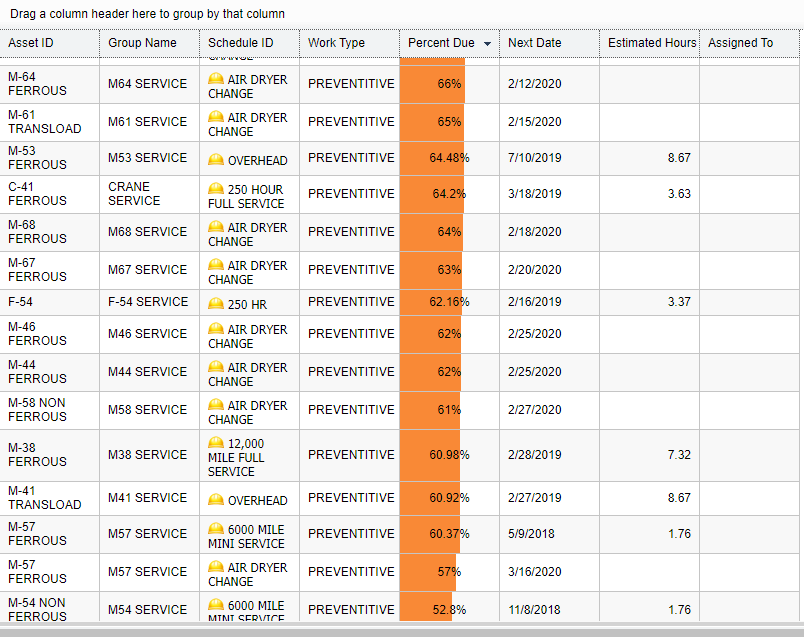Recording and Analyzing Work
Here at ManagerPlus, we claim we are the #1 Asset Management Solution. It’s not a claim we make lightly. That’s why we started this series to explain what sets us apart from just another CMMS or maintenance management software. This post is a continuation of a series about the underlying design behind ManagerPlus. If you haven’t read the first part, you should check it out here.
In our first part in this series, we talked about the power of a dashboard and getting information that contributes to the success of your asset management operations. In the second part, we talked about the data you can record about an asset, and why it’s important. Today, we’re going to take a look at how you can record your work, and ways to analyze it.
Work Schedules
The first type of work order that ManagerPlus helps you with is Preventive Maintenance Schedules. This is maintenance automation at its most basic level. Creating a Preventive Maintenance schedule allows you to assign specific service items that should all be done. This could be monthly inspections, 3,000 mile oil changes, or any other regular service that your assets require.
One way in which ManagerPlus brings more to the table is in the different ways you can set a schedule. Many repairs have a time or log requirement, like when your car needs an oil change every 2,000 miles or 6 months. ManagerPlus is able to monitor both meters and let you know when one of them comes due.
For anyone in a maintenance department, the concept of scheduling preventive maintenance work shouldn’t be new. ManagerPlus is simply helpful when it comes to the automation of those schedules. However, if all you use ManagerPlus for is as a memory aid, then its true power is being left behind.
Inspections
Inspections allow you to monitor the health of your assets. These are powerful tools to keep your operations up and running. Inspections also allow you to catch possible issues before they result in malfunctions or breakdowns. This keeps your assets and equipment running.
Inspections in ManagerPlus are also significant because you can generate work orders based on the results of individual line items on the inspection checklist. These work flows are useful because they automate some of your work order creation, and help ensure that the right work gets done.
Reactive Work Orders
If all you need is a reminder, then there is no reason to record anything. But, if you don’t record any of your work, it is nearly impossible to improve. That’s why you can do more than just set up schedules.
ManagerPlus also allows you to create work orders for when things break down. This might not seem very important in the moment, but recording your work is vital to understanding how your maintenance is affecting your organization’s bottom line.

Pulling it all together
Where your work records become powerful is in your data analysis. A single work order in isolation can’t tell you very much, but when you see many of them side by side, patterns and trends begin to emerge that you can use to improve and make better business decisions.
When you create a work order, you will assign a work type and a failure code, as well as a budget. Each of these is a way you can sort your work orders. This means you can generate reports to see what type of work orders you perform most often, as well as what is causing them. You can also look at these in terms of how much those work orders and assets are costing you. What’s more, you can do that analysis both in terms of monetary budgets and in terms of time factors like manpower, labor hours, or outside contractors. You can check logs, asset details, and costs all in aggregate and in a way that allows you to see exactly how your maintenance operations are functioning.
We hope by now you’re beginning to see how far your data can take you. When you create assets, their data goes into your platform. When work orders are generated and the work is completed, you’ll have that data in your platform. This is powerful. You’ll be able to run reports to display on Dashboards on all those things. But, when you’re ready to supercharge your ability to improve, you’ll need something more:
Structural organization.
Read on to learn more about this last secret ingredient and how it will help you revolutionize the way you do business.
